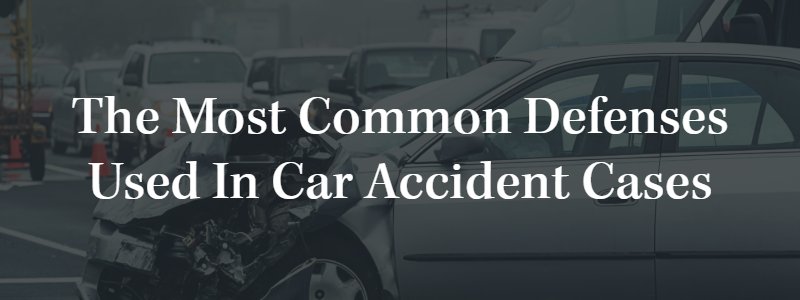Vehicle accidents can lead to devastating injuries and significant property damage. In general, accidents are caused by the careless or negligent actions of one or more drivers on the roadway. Vehicle accident cases can become challenging, particularly if fault for the incident is disputed. Whether you are involved in a vehicle accident and another driver is not accepting the blame, or if you have been directly blamed for a crash, we want to review some of the most common defenses used for a car accident case.
The Plaintiff was Also At Fault
Perhaps the most common defense of fault in a vehicle accident is claiming that the other party was also responsible for the incident in some way. In Pennsylvania, the Commonwealth operates under a “modified comparative negligence” system. This means that any person found to be 51% or more responsible for a collision will not be able to recover compensation for their losses. If a person is less than 51% responsible, they can recover compensation, though the compensation amount will be reduced based on their percentage of fault. The more fault a defendant can place on the other party, the less they will have to pay.
The Plaintiff had a Pre-Existing Injury
Just because a person is involved in an accident does not mean that their injuries were caused by that accident. If it can be shown that the plaintiff had existing conditions and that they did not suffer any new or distinct losses as a result of the crash, it would not make any sense for the defendant to have to pay for these injuries. However, proving that the plaintiff had pre-existing injuries and did not suffer any new injuries can be challenging and will require assistance from a skilled Philadelphia car accident attorney.
Defendant’s Negligence did not Cause the Injuries
Just because a person is involved in a vehicle accident does not necessarily mean that they were at fault in any way. Even if the other parties try to shift blame onto a defendant, the defendant could provide various types of evidence to show that they did not cause the crash. Additionally, even if the defendant was negligent and caused a crash, it still has to be shown that the crash caused the injuries involved.
There are Other Parties Responsible
Vehicle accident cases are complex, and it could certainly be the case that there are other parties who could hold my liability aside from the defendant in question. This could include other drivers, municipalities responsible for roadway maintenance, roadside construction crews, and more. If the defendant can shift some for all of the fault on these other parties, they may be able to get out from paying the plaintiff’s expenses.
The Plaintiff Failed to Mitigate the Damages
If a defendant can show that the plaintiff did not act reasonably following an accident to mitigate their level of losses, this could be used as a defense and court. For example, suppose a crash victim makes a claim for lost wages for two full years following an incident, saying that they were unable to work due to the injuries caused by the crash. However, if the defendant can show that a doctor cleared the plaintiff to work and that the plaintiff was offered several jobs and turned them down, this could be proof that the plaintiff failed to mitigate their overall losses.
